TL;DR:
Self-custody crypto wallets are the backbone of decentralized finance (DeFi), giving users greater control and autonomy over their assets.
By following a few simple steps, you can set up your own Valora wallet, secure your digital assets, and tap into the real potential of DeFi and Web3.
Some best practices for keeping your self-custody wallet secure include safeguarding your recovery phrase, double-checking all transaction information before sending, and always doing your own research on projects and dapps before you invest.
As the world moves toward a more inclusive, decentralized financial system, it’s becoming increasingly important for everyone to have a secure crypto wallet where they can store and self-custody their digital assets.
In this article, we’ll guide you through the four easy steps of creating a crypto wallet, and then some quick best practices for keeping it safe - so you can take your first (or next) steps in joining the decentralized financial web and experiencing the real potential of crypto and DeFi.
(If you’re already familiar with the steps and looking to get started, visit valoraapp.com.)
Quickly, what is a self-custody crypto wallet again and why do I need one?
A self-custody wallet is a type of crypto wallet that gives you, the user, full control over the private keys to your digital assets. This means that you have exclusive control over your funds, without having to rely on any third-party custodian or exchange to secure them for you.
A self-custody crypto wallet is not only a secure way to store and manage your digital assets, but it’s also the gateway to interacting with decentralized applications in the exciting new world of Web3.
With a self-custody wallet, you can access your funds on the blockchain anytime, participate in decentralized finance (DeFi), and interact with other decentralized applications (dapps) that are being built on top of blockchain technology.
Further reading: Custodial vs. Non-custodial Wallets. Learn more about their differences in this article on the Valora blog.
Key factors to consider when choosing a self-custody crypto wallet
If you want to thrive in the world of Web3, you can’t do it without the right self-custody wallet. That’s why we’ve put together a comprehensive list of the most important factors to consider when choosing a wallet - so you can make an informed decision about what’s best for you.
Here are some key questions you need to ask yourself if you want to choose the best crypto wallet for your needs:
Platform compatibility
Dapp and blockchain compatibility
Fees
Security
Design
Supported assets
Portability
Hot or cold storage
Inclusivity
Multiple accounts
Reputation
How to create a crypto wallet in a secure way
Disclaimer: In the event that your screen displays variations from the screenshots illustrated below, we kindly recommend that you visit our support page to access the latest guide available for Valora's wallet.
Getting started with the Valora Wallet
1. Download the Valora app
Find the app in Google Play or the App Store on your mobile device, or by scanning the QR code on the homepage.
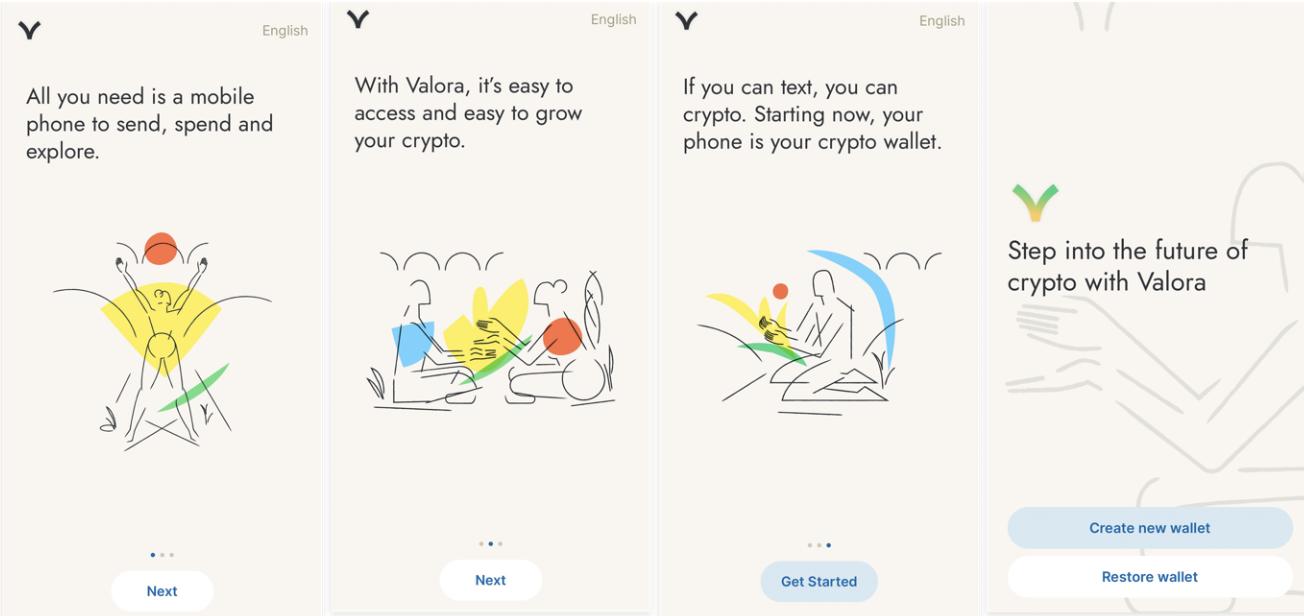
2. Create a new account
Once you’ve downloaded the Valora wallet, you may open the app and start the process of creating your Valora account: begin with your name, choose a 6-digit PIN you can remember, and connect your phone number.
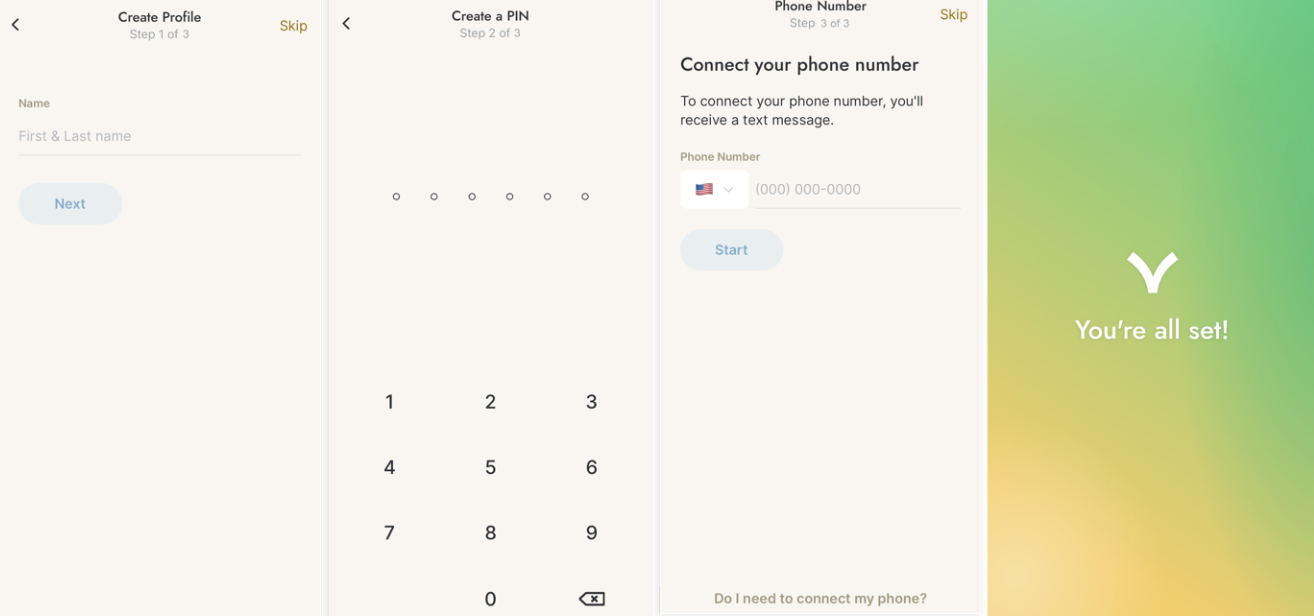
3. Backup your Recovery Phrase (important)
After you finish creating your self-custody wallet, be sure to back up your recovery phrase. Your recovery phrase is a special password that you and only you can access, and it’s the only way to recover your account.
Write it down, store it in a safe place, and always keep it private.
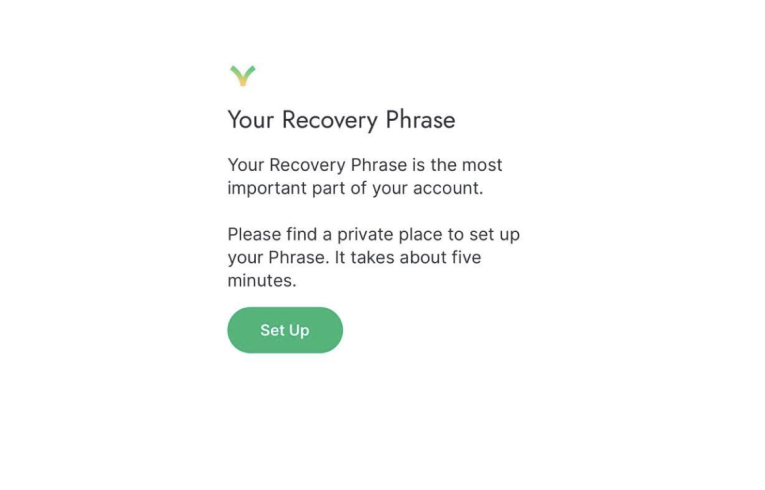
You’re all set! Explore your new wallet
Once you create an account and safeguard your recovery phrase, you’re all set to start exploring and taking advantage of the features of your new wallet.
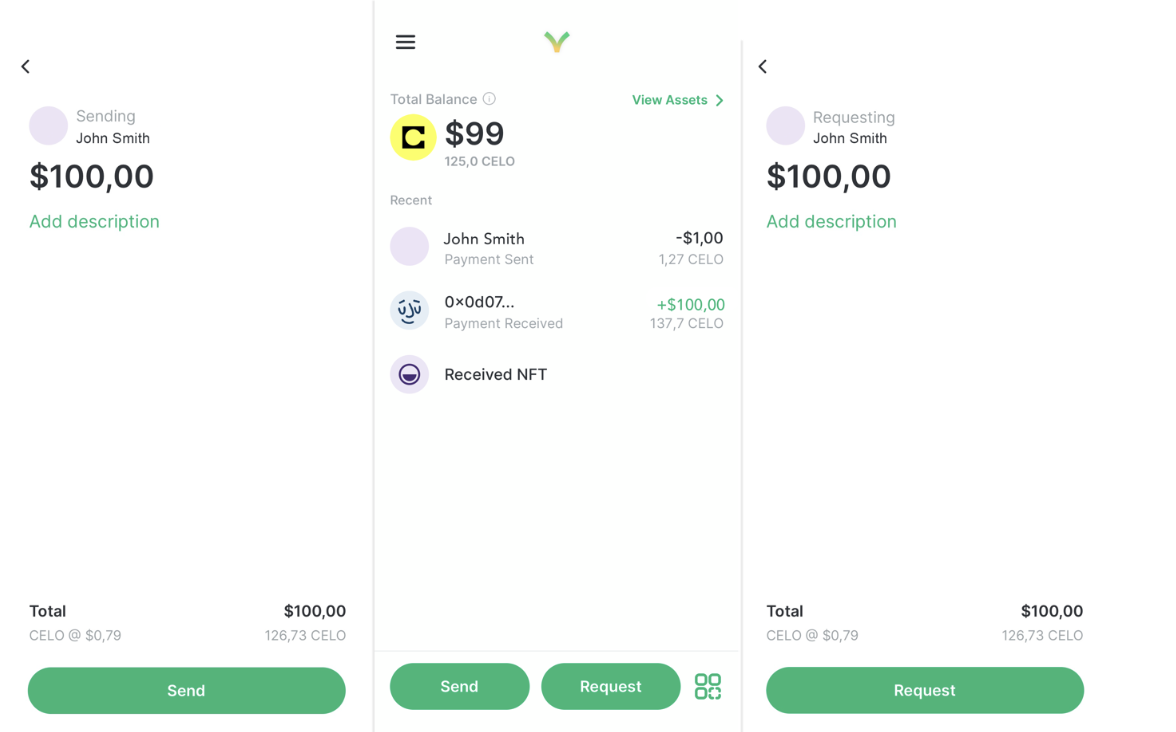
Sending & requesting funds
Valora users can send and request funds from one another by sharing their unique QR code or wallet.
To send funds, all you have to do is tap the “Send” button on your wallet homepage. This opens up your contact list. Once you select an amount and a recipient from your contact list, tap “Send” once again, and your payment will be submitted.
On the other hand, if you want to request funds from another user, tap the “Request” button. You’ll once again see your list of contacts. Select an amount and a recipient for your request, and that recipient will receive a notification that you’ve sent them a funds request.
Your QR code
Your QR code is a special scannable code that you can share with other people to quickly and easily receive funds directly into your wallet. You can find it in the lower-right corner of your wallet home screen.
Adding funds
You can fund your Valora account with assets such as Celo Dollar (cUSD), Celo Euro (cEUR), and CELO either directly through a bank, card, or crypto exchange. Once you’ve added funds to your account, you’re ready to go!
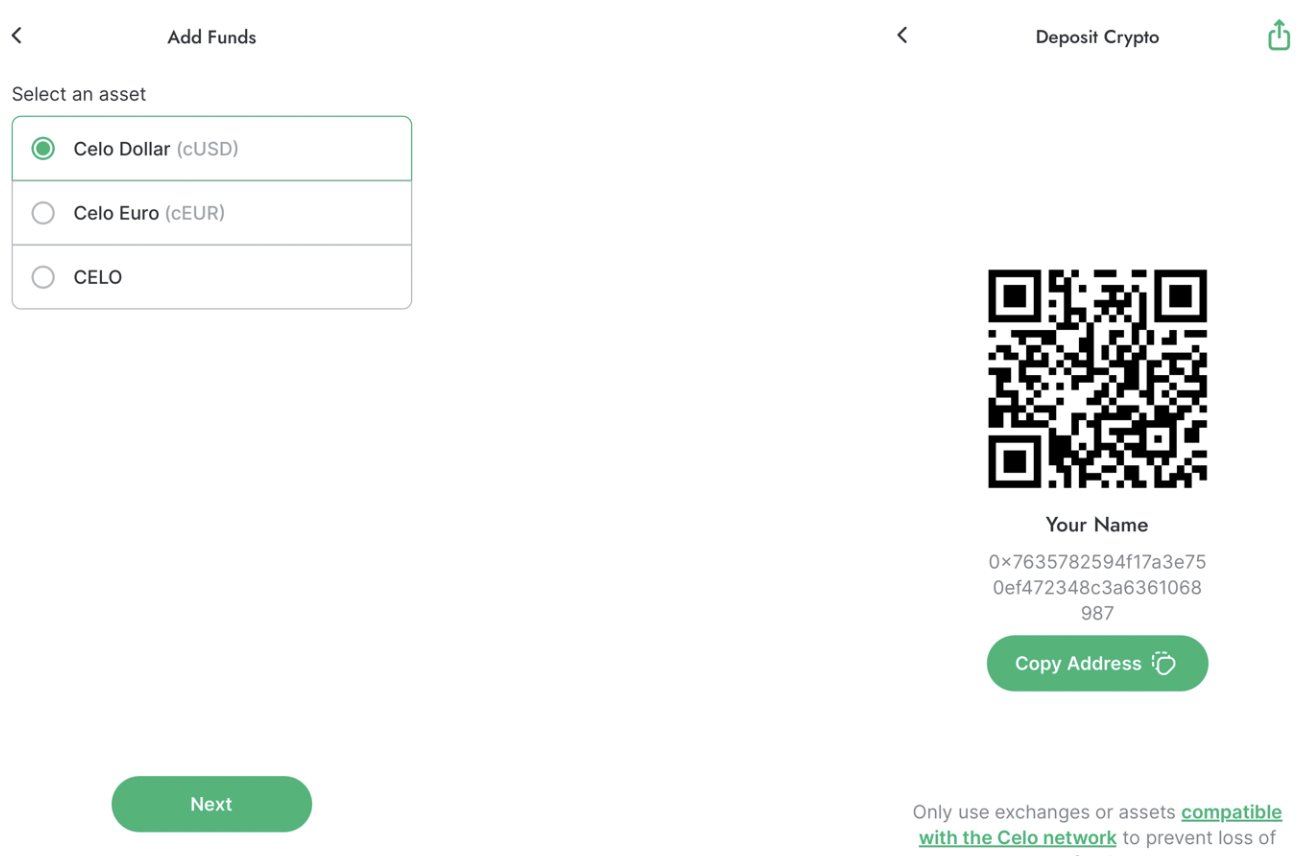
Start exploring dapps and getting rewards inside the Celo ecosystem
The Valora wallet supports many dapps that users can access directly from the mobile app. From platforms that allow you to swap cryptocurrencies to sophisticated financial tools, Valora lets you do more with your funds and tap into the potential that crypto and web3 can provide.
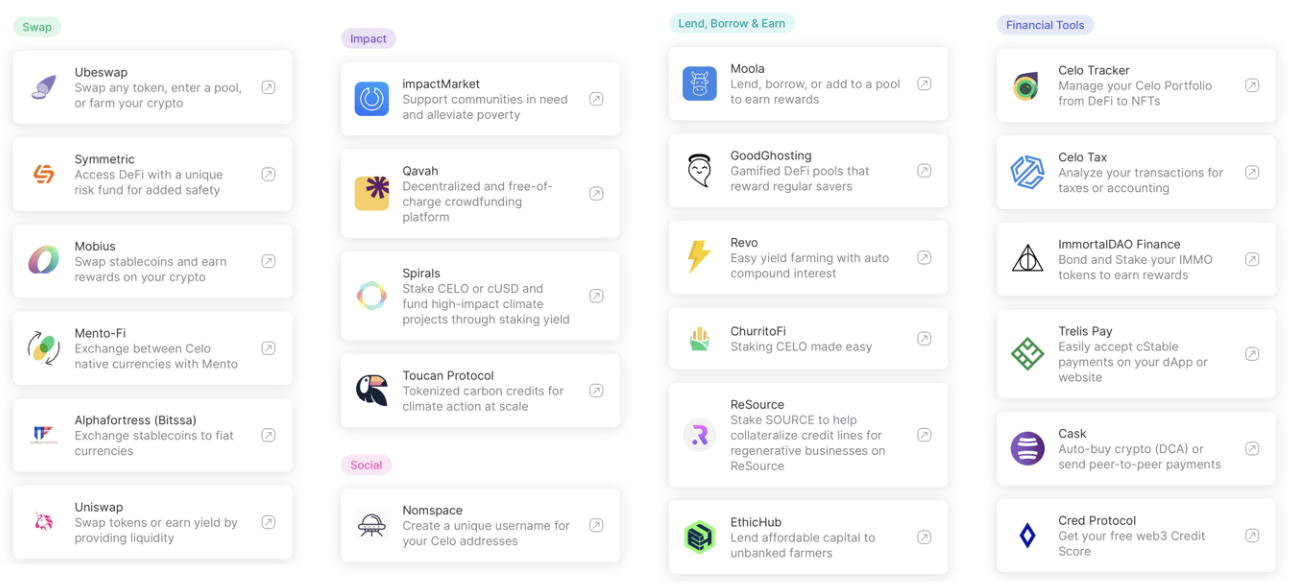
How to keep your new self-custody wallet secure
When it comes to safeguarding your new self-custody wallet, there are a number of steps and measures you should take to ensure your digital assets (and your sensitive information) remain safe and secure.
Here are some of the most important things to keep in mind:
1. Keep your recovery phrase safe and private
One of the most important aspects of using a self-custody wallet is having a way to recover your assets in case you lose your device or forget your password. This is where the recovery phrase comes in. Keeping your recovery phrase safe and secure is key to protecting your assets.
Remember that your recovery phrase is yours and yours only – it should never be shared with anyone. Securing your recovery phrase will give you peace of mind knowing that your assets are safe and easily recoverable.
2. Always double-check the recipient’s wallet address
It's always a great idea to take a moment and double-check the recipient's wallet address before sending any cryptocurrency.
This simple step can help ensure that your assets are safely delivered to the intended address without any mishaps. And if you’re worried about sending a large amount, you can even do a small test transaction to make sure your funds will get to the address they’re intended for.
3. Don’t allow browser extensions to read all your data on websites you visit
When it comes to browser extensions, there's no doubt they can be handy. But they also come with risks.
Some extensions can gain access to crucial data such as your login credentials and credit card details. This is especially important when using a self-custody wallet, as protecting your assets is paramount. To help keep your wallet safe, it's best to avoid using browser extensions that have access to sensitive information.
4. Use a secure internet connection (avoid public Wi-Fi networks)
Using a public Wi-Fi network, although convenient, can also put your wallet at risk. If a public network is unsecured, anyone may be able to intercept the traffic and potentially steal your recovery phrase or other important information.
Always use a secure internet connection such as your home Wi-Fi, or a VPN when using public Wi-Fi networks.
5. Stay mindful of phishing attacks
Phishing attacks are one of the more common ways scammers attempt to compromise accounts. These often involve fake websites or e-mails that mimic a legitimate source but are actually designed to trick a user into revealing vital information.
To stay safe, always double-check the sender of any e-mail and the website URLs they link to before providing any information.
6. Always do your own research (DYOR)
Before you interact with any smart contract or dapp on the blockchain, make sure to do your own research on its quality and legitimacy. Always be cautious of unsolicited messages and offers, and never share any sensitive information, such as your recovery phrase, with anyone.
The Bottom Line
Self-custody wallets are the backbone of the decentralized finance (DeFi) revolution, and they provide individuals with unprecedented levels of financial freedom and autonomy. They’re a must-have tool for anyone wishing to tap into the potential of decentralized finance and Web3.
By following the steps in this guide, you’ll be able to effortlessly set up and secure your own self-custody wallet with Valora. Our wallet is designed to help you safeguard your digital assets while making it easy to begin exploring Web3 with a built-in library of dapps and financial tools.
Valora is your gateway to discovering new and better ways to manage, send, and invest your funds in the world of decentralized finance.
